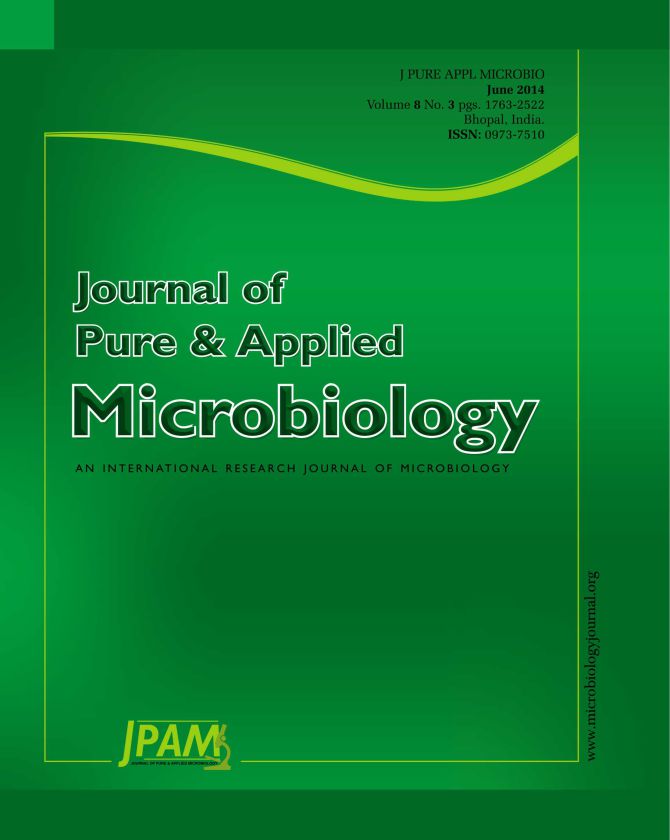The effect of intercropping systems and herbicide application on soil microbial population was studied in Indo-gangetic plains at Ludhiana, India at two different sites during 2010-11 and 2011-12 respectively. The experiment consisted of 4 cropping systems {sole sugarcane, sugarcane + cabbage (1:1); sugarcane + peas (1:2) and sugarcane + garlic (1:3)} in the main plots and six weed control treatments {oxyfluorfen 0.176 kg & 0.234 kg ha-1 pre emergence, pendimethalin 0.562 kg & 0.75 kg ha-1 pre emergence, hand weeding and weedy check} in sub plots replicated thrice in a split plot design. The composite soil samples were collected at 0, 15 and 30 days after spray. There were 5.25 and 8.71% increase in population of bacteria with intercropping of peas as compared with sole sugarcane crop after a period of four weeks at site I and II respectively. Similarly, population of actinomycetes also increased under sugarcane and peas intercropping system. However fungal count did not vary under cropping systems. The highest microbial population was observed in unsprayed plots i.e. in hand weeding and weedy check as compared to those in herbicidal treatments. There was decrease in viable counts of bacteria, actinomycetes and fungi shortly after the spray and this effect was more pronounced with higher concentration of oxyfluorfen and pendimethalin at site I than site II. Thereafter, the microbial population recovered within 30 days to reach population not significantly different from the hand weeding and weedy check treatments. Therefore, intercropping in autumn sugarcane especially peas improves the soil microbiological environment while application of herbicide only temporarily suppress the microbes which bounce back within 3-4 weeks.
Intercropping, Oxyfluorfen, Pendimethalin, Soil microbes
© The Author(s) 2014. Open Access. This article is distributed under the terms of the Creative Commons Attribution 4.0 International License which permits unrestricted use, sharing, distribution, and reproduction in any medium, provided you give appropriate credit to the original author(s) and the source, provide a link to the Creative Commons license, and indicate if changes were made.


